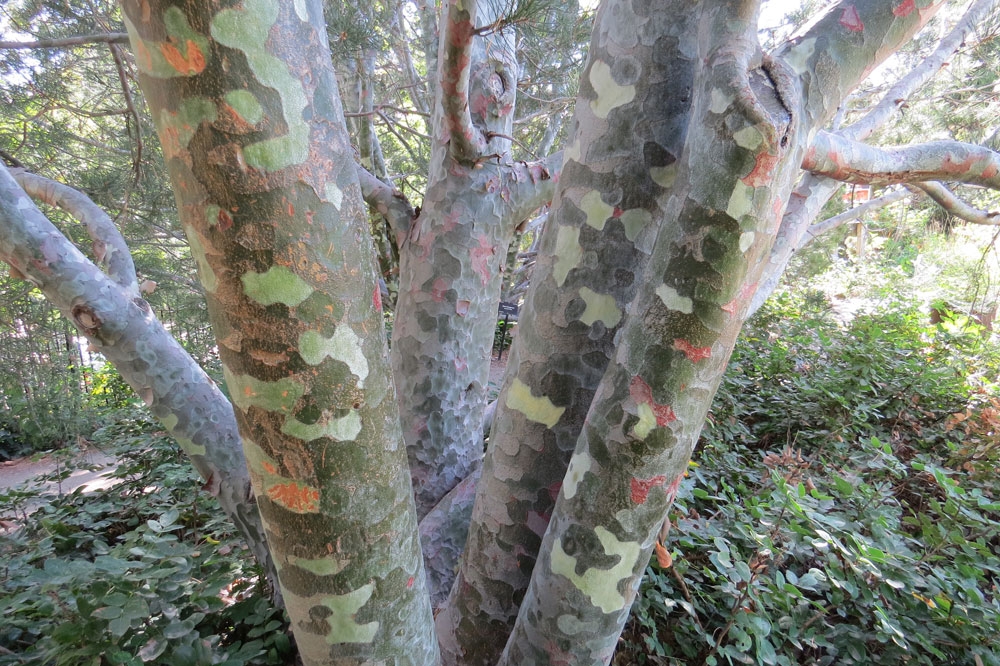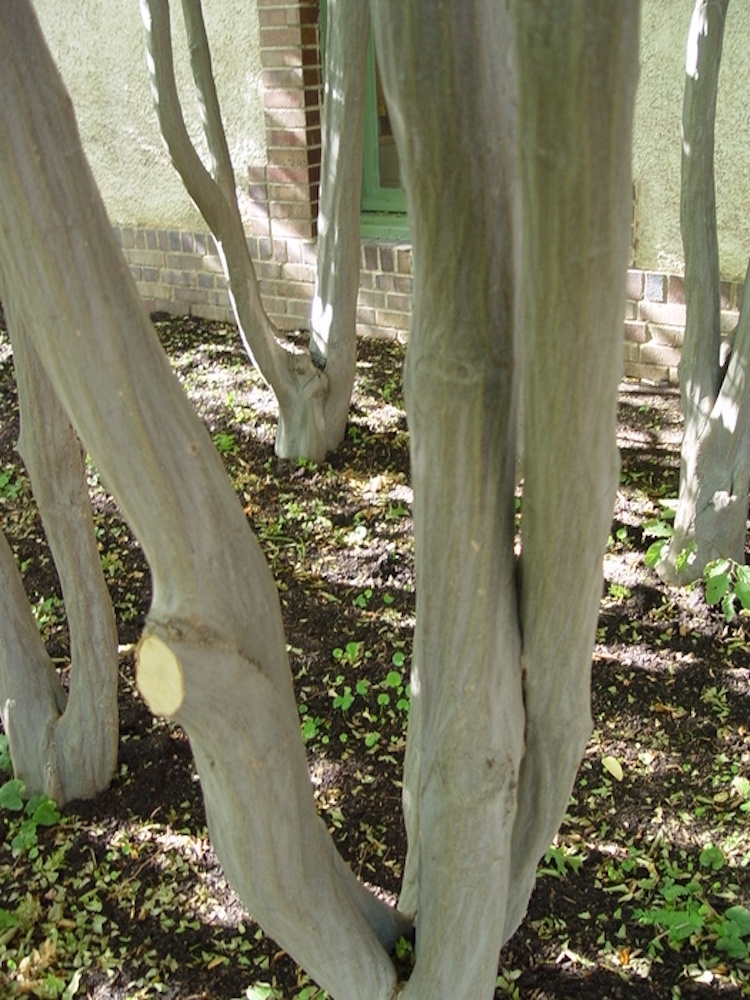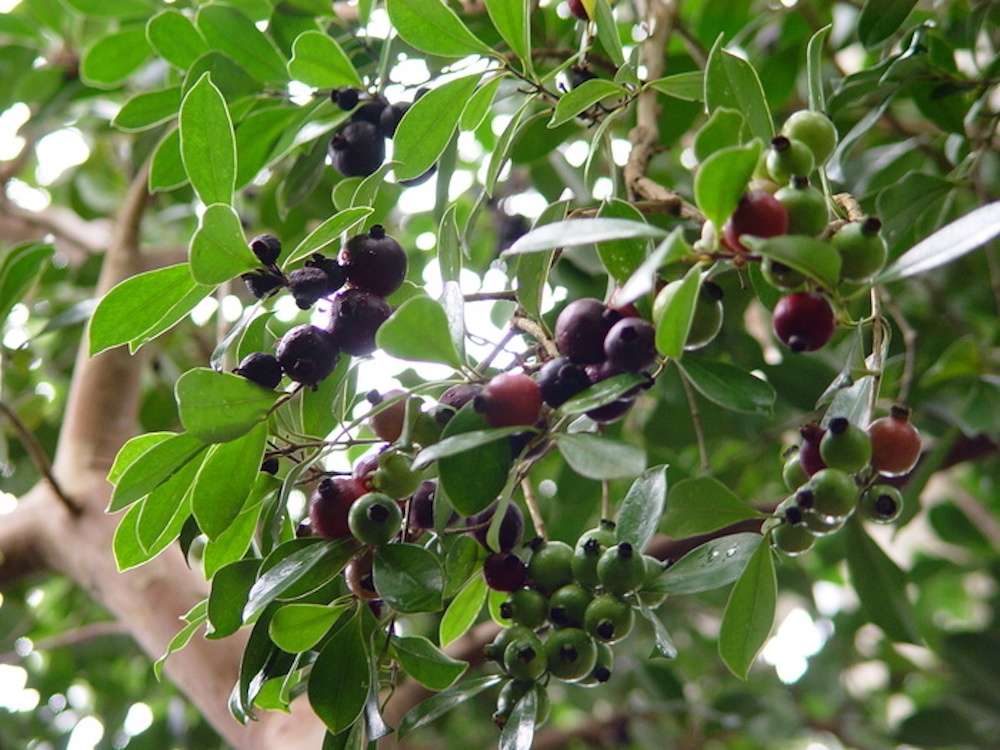November Walking Tour – Interesting Bark
Visiting the Gardens in the fall is the perfect time to admire the tree bark that is so often overshadowed by leaves and flowers during the growing season. That being said, my first recommendation happens to be the bark of an evergreen tree, Pinus bungeana, or the lacebark pine. This tree, much like a sycamore, has exfoliating bark that peels back as it ages to reveal the underlying hues of olive, white, light purple and silver. Make a visit to the Birds and Bees Walk to see the camouflage-like bark of this gorgeous specimen.
The Waring House garden, available for anyone to see at the corner of 9th and York, is one of our less frequently visited gardens. Amongst the Hosta and other shade-loving perennials, you will find a stand of trees known commonly as American hornbeam or musclewood tree (Carpinus caroliniana). One look at the grey, fluted, rippling bark will explain the latter. C. caroliniana is native to Eastern North America, grows to about 25’ tall and is hardy to zone 3. At one time, the hardwood of the trunk was used to make tool handles and other implements; due to the limited quantity of wood that can be harvested per tree, it is not used widely in commercial applications today.
Let’s head into the Boettcher Memorial Tropical Conservatory to warm up a bit. If you follow the path to the right as you enter from the lobby, you will come across a strawberry guava tree (Psidium ‘Titto’) about 50 feet up the path along the southern edge of the Tropical Conservatory. Multiple species of guava of the genus Psidium exhibit smooth, copper-colored bark that flakes over time to reveal a lower green layer. Many researchers believe that the smoothness of the bark prevents epiphytes (plants that derive nutrients and moisture from the air, often living non-parasitically on other plants) from taking hold. Such an advantage would ensure adequate resources for the guava but might contribute to lower biodiversity in natural environments overrun with Psidium.
Lastly, as you exit the Tropical Conservatory and enter Marnie’s Pavilion, take a minute to admire the display of epiphytes (including orchids and bromeliads) arranged on the large, assembled “branches” that can be viewed from the balcony. Although this tree has been manufactured, the bark was harvested from the very real Quercus suber, or cork oak. Bark from this tree is also used to manufacture cork for wine bottle stoppers and cork flooring products.
Interesting Bark Gallery



Comments
Trees
also, paperbark maple, coral bark Japanese Maple, of course aspen and birch... How about a tree map at York Street?
Trees at the Gardens
Hi Judy,
Thanks for mentioning some other trees that have beautiful bark!
Have you seen our Gardens Navigator website? http://navigate.botanicgardens.org/ECM_Home.html ? The Gardens Navigator allows you to locate and learn about thousands of plants from the Gardens collection. You can even choose a tour created by our staff or create your own tree tour!
Doris Boardman
Website & SEO Manager
Add new comment